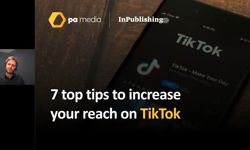
In February, the New York Times had a viral hit on its hands in the UK, with an interactive quiz designed to ask you some questions about which words you use for certain things, and then use that to pinpoint on a map whereabouts in the UK or Ireland you came from. This sort of topic is ripe for virality – as it taps into the key things that make people want to spread a story. It has an emotional resonance, it has room for debate, and publishing it to your own social media feed makes a statement about you. It also gave each user a visible output of their own personal dialect map to share.
That “statement about you” is a crucial thing to understand. What motivates people to share? Well, people don’t tend to share stuff that will make people think less of them – think about what you put on your own personal social media timeline. It’s only ever the flattering photo, the glossiest view of that family event you went to, that “I was here” of posting that you have attended a sought-after sporting or music event. And that’s the approach that people have to sharing news stories on social – they share things that are important to them, to show they care, to show they were right all along to be concerned about this, or to show that they have a great sense of humour. When publishers can tap into that feeling, they might have a viral hit on their hands.
But most of the time, rather than creating something that will go viral, publishers find themselves reporting on things that have gone viral. At the heart of the most viral stories, videos or interactives is one key news observation, that “the internet will love this”. It’s no different to the news sense that traditionally helped reporters and editors spot a great lead, or the angle that would make someone pick up a paper because of a splash headline. It’s about spotting what your readers will find irresistible to click – and which won’t leave them feeling short-changed.
You will still see people in the publishing industry mocking the curiosity gap headline formulation that Upworthy perfected as an art – “A Brave Fan Asks Patrick Stewart A Question He Doesn't Usually Get And Is Given A Beautiful Answer” and variations on “You won’t believe what happens next”. But that hasn’t really worked as a viral trick for several years now since Facebook, one of the main vehicles of getting viral traffic, tried to clamp down on low-quality sites, with, perhaps, varying degrees of success.
It’s about spotting what your readers will find irresistible to click – and which won’t leave them feeling short-changed.
Don’t be duped
And if you are writing about viral content, it is a good rule of thumb that if it looks too good to be true, then it probably is – and you need to keep your traditional news wits about you. Take last year, for example, when a video started spreading on the internet of a woman in Russia pouring bleach into the laps of men on a metro train who were “manspreading”. Traditional news outlets picked up on it and lapped it up – it had everything, a controversy, a pretty woman, video footage, and the chance to go for an outrageous headline. But was it true? The answer, of course, was, no it wasn’t. And any good reporter would have immediately asked themselves, who is this woman, why was it being filmed by somebody else, and what evidence at all from the footage was there that the substance being poured wasn’t just water.
Publishers also need to be wary of when they are clearly being manipulated by a canny PR agency or marketing team, looking to place stories in the press. You can’t tell me that Marks & Spencer didn’t know exactly when making a heart-shaped pork product a couple of days before Valentine’s Day and then marketing it as the “love sausage”, and Moonpig’s strategy of posting a tweet asking someone to stop sending them nude photos did the trick in generating lots of funny replies, and consequently joke round-ups mentioning the brand in lots of the UK press.
There’s a real question for publishing brands though – what is the value that viral or social content is bringing to your brand? Everyone loves clicks and high numbers on Chartbeat or Google Analytics, but are you quantifying what this traffic is worth to you? Now, on a crude equation, if your website business model continues to revolve around display advertising, then getting traffic at all costs is an aim. It can be the only reason that the Daily Express website re-purposes press releases about the Pokémon Go game as news articles, because it can’t be that the editor has identified the Pokémon Go-playing graphic as crucial for the future of the brand.
Most of the time, rather than creating something that will go viral, publishers find themselves reporting on things that have gone viral.
A reader service
For me, I think there are four good reasons as a news brand or publisher to look at doing social or viral content. The first is of providing the service of pointing out to your audience that “something is there”. In that sense, I feel like “Hey, look at this thing on the internet which is funny and will make you laugh” is not providing a dissimilar service to the television, film or radio review of the past. It is treating “the internet” as a facet of pop culture, and curating that culture for someone who chooses to read your brand. I’ve sometimes ended up writing stories for the Guardian based on not much more than the fact that “this thing on the internet has made me giggle on the way to work, and I bet it would make a lot of our readers giggle too”.
There’s a second reason, which is an extension to this, where you identify something that has become commonly shared on the internet, and you want to explain it. “Why do I keep seeing the same two angry men on social media?” is something I wrote for the Guardian when it seemed you couldn’t move on social media for the sight of Paul Teutul Sr and Paul Teutul Jr shouting at each other. The text varied across the five frames, but the image of two angry men stayed the same. But who were they?
A third reason might be to provide a space for your readers to enjoy and comment on a fun situation – depending on whether your site has comments on or not. When Barry Gibb played the legends spot at Glastonbury, one woman joked on Twitter that it was a shame he had to do so many cover versions, and not his own material. The joke, of course, was that the Bee Gees’ songs had provided so many hits for 90s artists like Take That or Steps. And of course, this being the internet, many, many men stepped in to carefully explain her joke to her, and point out that the Gibbs wrote all those songs in the first place.
Everyone loves clicks and high numbers … but are you quantifying what this traffic is worth to you?
Riding the viral wave
But the performance had been greeted with a wave of love on social media, the Glastonbury security staff had done a co-ordinated dance to one of his tracks, and at one point, Barry Gibb had donned an old Bee Gees style jacket thrown to him by the audience. Wrapping that all together in an article the next day gave the Guardian a chance to host a comment thread that was just full of an out-pouring of love for Barry Gibb and the Bee Gees, and was a way of taking advantage of a social media and television moment. It turned out to be one of our most read pieces of Glastonbury coverage that year.
A fourth reason for covering a viral story? If you have something unique to ad. Are you the first people to get to interview the people in the centre of a viral storm? Photographs that go viral can be an excellent source of an exclusive if you can get to the people first. Students Patrick and Lucy were seen all around the world in a picture used as a flyer for the Milk student night at Bourbon club in Edinburgh, in which he appears to be bellowing into her ear as she looks bored to death. “The most relatable meme in the world” was how some people described the picture. It was a radio station that got them both to go on the record about whether they actually knew each other, and what Patrick was saying to her in the iconic image – sadly it turned out neither could remember. Also highly sought out for interview were the models in the “Distracted boyfriend” meme based on a stock image taken by Barcelona-based freelance photographer Antonio Guillem. He didn’t even know the image had gone viral until he was besieged by media interview requests.
So, while social and viral content can still be looked down upon snobbishly by both some publishers, and certain sections of the audience, it definitely has a role to play in the content mix for a modern digital publisher. There are pitfalls, and you still need, I think, to exercise solid news judgement about what you cover. In fact, if anything, you need to apply a more rigorous level of scrutiny to the verification of the sources you are using. But publishing has always been about entertaining the reader, as well as informing them, and the social and viral story is the perfect “And finally…” for the modern era.
Social and viral content definitely has a role to play in the content mix for a modern digital publisher.












